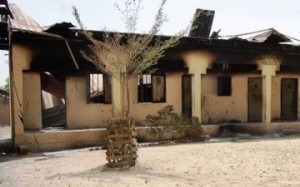
Between 2009 and 2013, there were nearly 10,000 violent attacks on schools, pupils and their teachers around the world, a new report sponsored by the United Nations has revealed.
However, the recent attack at the Federal Government College, Buni-Yadi, Yobe State only received a passing mention in the report released in New York, United States on Thursday.
The report is also silent on the gun attacks in schools in the US in the period under review just as it did not capture the casualties recorded due to the shootings of pupils and teachers in Sandy Hook in the US in 2012.
Though it describes the attacks as serious, it adds, “It is small in comparison to the almost routine violence in other countries.”
According to the report, the most dangerous places for education are Pakistan, Somalia, Syria, and Colombia.
It indicates that the pupils and teachers are not caught up in other violence, but they are deliberately targeted because they are involved in education.
“These are not cases of schools and their staff just caught in the crossfire,” says the director of the Global Coalition to Protect Education from Attack, Diya Nijhowne.
“They are bombed, burned, shot, threatened, and abducted precisely because of their connection to education.”
Identifying continents such as Africa, Asia and South America as topping the list, the report notes that 9,600 attacks took place in 70 different countries.
“Pakistan witnessed the greatest number of attacks,” it adds. School buildings were constantly being blown up.
Pakistani schoolgirl Malala Yousafzai shot in 2012 by Taliban opponents of girls’ education drew global attention.
Colombia, it states, is the most dangerous place for teachers with 140 of them killed and a number of death threats.
The report stresses that the attacks are partly associated with ideology.
“In Nigeria, Islamic militants killed 29 pupils at a boarding school this past week. This number is very different from the 59 causalities reported by the Nigerian media.
In Colombia, rival gangs and paramilitary groups are the problem. In Iraq, there is outright sectarian violence,” the report states.
It adds that 30 teachers were shot dead in Nigeria last year, including some in front of a class.
The report also dwells on the use of facilities for education as places of imprisonment and even torture. It also mentions that school had been used as training bases for militants.
Schools in Somalia and Syria, it states, have been used as bases for snipers. “Conversely, schools have been targeted by heavy weapons fire, including mortar and rocket attacks, while students were still in school.”
Conflict in Syria has seen deadly attacks on schools too, including universities in Aleppo and Damascus.
The perpetrators have included government forces, armed insurgents, terror groups and criminal gangs.
The study calls for the creation of “safe zones” around schools and wants combatants to recognise the need to protect places of education.
“The killing not only spreads fear, it also blights lives. The relentless destruction of schools in some areas of conflict is depriving whole cohorts of children of an education,” says the reports lead researcher, Brendan O’Malley.
“There is a knock-on effect on social and economic developments in places that can least afford to be held back.
“Where the government lacks the capacity or will to repair damaged schools, the effects can be felt for years after the attacks have happened.”



